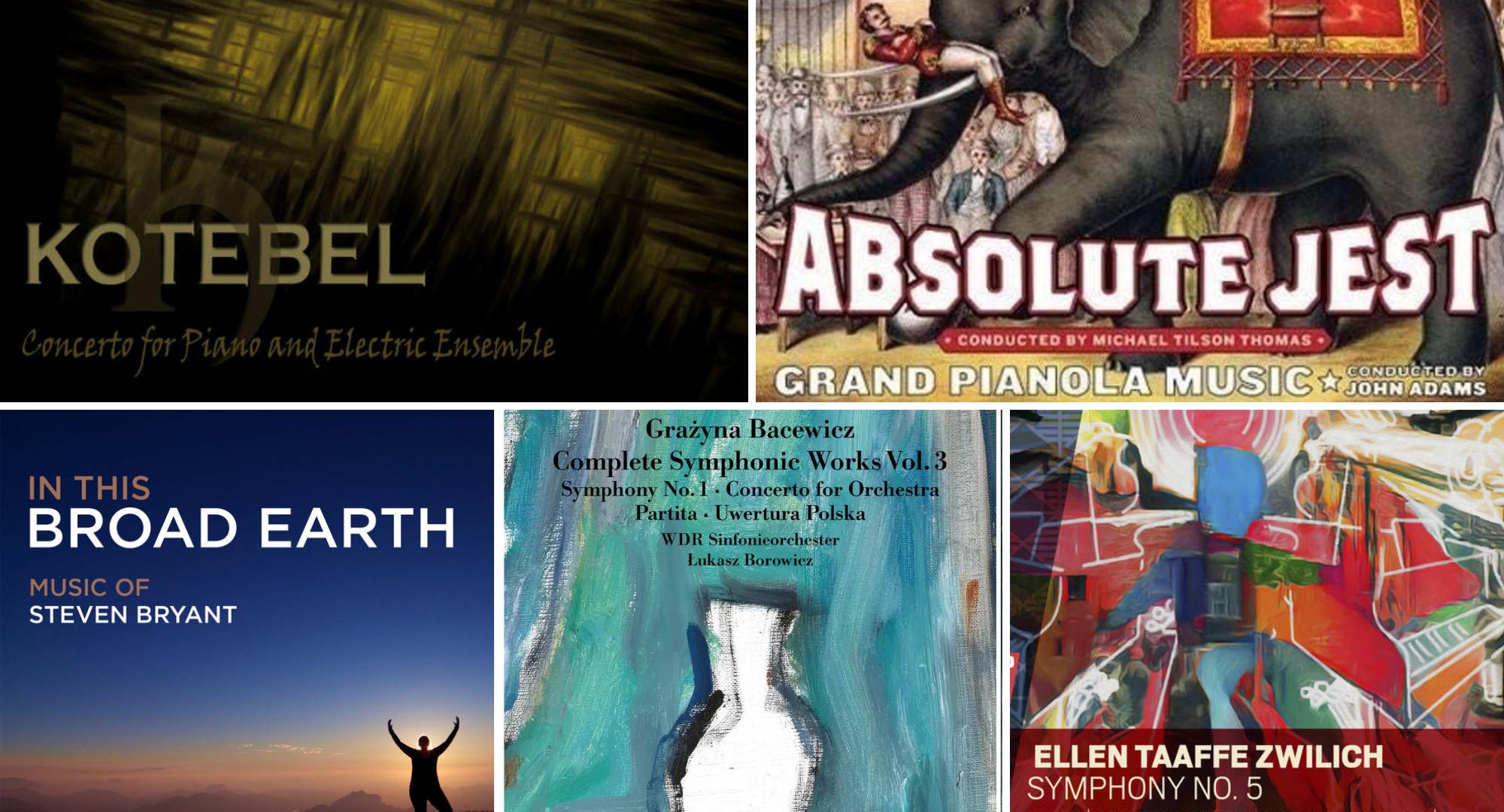I’ve created a starter pack of concertos that aren’t your typical INSTRUMENT + ORCHESTRA. I’ve included several concertos for orchestra (each section gets a feature), a concerto for string quartet, and a concerto for piano and electric ensemble. Normally, I try to keep the performers consistent between Spotify and YouTube – BUT since many of the concertos have a lot of movements, I opted for YouTube versions that would play the pieces in their entirety as I found them.
To make sure these playlists delivered to your inbox every week, sign up for my newsletter.
I give this playlist a Difficult Listening Hour rating of 3/10.
Concerto for Orchestra by Grażyna Bacewicz performed by WDR Symphony Orchestra Cologne. Album: Bacewicz: Complete Symphonic Works, Vol. 3. Apologies that the YouTube video is missing the last movement.
Concerto for Orchestra by Witold Lutosławski performed by the Chicago Symphony Orchestra. Album: Lutosławski Concerto for Orchestra and Symphony No. 3.
“As so often in Lutoslawski’s music, the main movement of the Concerto for Orchestra is the last, here a vast finale that summarizes, unifies, and finally resolves the materials and dramatic tensions of the much shorter first two movements. The finale is in two large parts: a Passacaglia ingeniously constructed over a folksong ground bass, followed by a Toccata e Corale – a large-scale sonata-form movement whose main theme is in fact the same as that of the passacaglia we have just heard, while its second theme is made of music first introduced in the Intrada. The chorale that occurs at the heart of this final movement is newly invented, but its countermelody, first given to solo flute, is descended from yet another Polish folk song.” -Steven Stucky (via the LA Phil)
Symphony No. 5 by Ellen Taaffe Zwilich performed by Boston Modern Orchestra Project. Album: Ellen Taaffe Zwilich: Symphony No. 5. From the liner notes, “Symphony No. 5 grabs one’s attention by introducing its own unmatched scale and grandeur. The listening experience pivots from a conversation to a Socratic debate, where a plurality of ideas shape a prevailing vision among its participants.
credits”
Absolute Jest by John Adams performed by the San Francisco Symphony. Album: Adams: Absolute Jest & Grand Pianola Music. ““String quartet and orchestra” is admittedly a repertoire black hole – is there a single work in that medium that is regularly heard? And there are good reasons for why this is. The first is a simple issue of furniture: the problem of placing four solo players in the “soloist” position but still in front of the podium (so that they can follow the conductor) is daunting. The inner players, the second violin and viola, are frequently lost to the audience both visually and aurally.
But placement on the stage aside, the real challenge is in marrying the highly charged manner and sound of a string quartet to the mass and less precise texture of the large orchestra. Unless very skillfully handled by both composer and performers, the combining of these two ensembles can result in a feeling of sensory and expressive overload.” -John Adams (via the LA Phil)
Concerto for Wind Ensemble by Steven Bryant performed by Michigan State University Wind Symphony. Album: In This Broad Earth: Music of Steven Bryant.
Concerto for Piano and Electric Ensemble by Carlos Plaza performed by Kotebel. Album: Concerto for Piano and Electric Ensemble.

